Soundscan Surprises, Week of 1/19
Back-catalog sales numbers of note from Nielsen SoundScan.

The definition of “back catalog” is: “at least 18 months old, have fallen below №100 on the Billboard 200 and do not have an active single on our radio.”
Last week, The Killers reissued their 2004 album Hot Fuss on vinyl and I want to know who buys so much vinyl. Seriously; according to The Guardian, vinyl sales hit a 25-year high because apparently people want “tangible” music and also they like to collect things when people die. Spending on vinyl outstripped spending on digital downloads, which some industry insiders predict could be on their way to extinction thanks to streaming services. Remember when you used to brag about the size of your music library on iTunes? God, who cares.
3 Doors Down and Toby Keith performed at the Trump show last week, I don’t know if you heard, but they got some record sales out of it. Huge week for Circa Survive, “a rando emo band from Philadelphia,” according to a friend familiar with the Pennsylvania music scene—their sophomore album, On Letting Go, is sandwiched at number 31 between Guns ‘N Roses and The Lumineers. It was released ten years ago, and the band is doing an anniversary tour, playing that album. The aforementioned Pennsylvanian native supposes, “I guess all those extras are being sold at those shows? I’ve been to some of those shows. People buy those old records like hotcakes.”
The Hoppers are a gospel group that also happens to be a family from North Carolina. I tried reading more, but the Henderson Daily Dispatch requires a subscription. Sturgill Simpson performed on SNL so both his back-catalog titles got a nice boost. A duo (also from Philadelphia) named Marian Hill had their song “Down” featured on a new Apple ad for those AirPods (which everyone knows should be called Airbuds), in a spot with Lil Buck:
There you have it, kids. All you need to do to move records is: die, play the inauguration of a very unpopular man, do ads for Apple, or play live shows.
Record sales: vinyl hits 25-year high
- KILLERS HOT FUSS 7,274 copies
2. MICHAEL*GEORGE FAITH 6,246 copies
10. 3 DOORS DOWN GREATEST HITS 3,303 copies
31. CIRCA SURVIVE ON LETTING GO 1,813 copies
42. KEITH*TOBY TOBY KEITH 35 BIGGEST HITS 1,659 copies
68. SIMPSON*STURGILL METAMODERN SOUNDS IN COUNTRY MUSIC 1,351 copies
132. MARIAN HILL SWAY 1,005 copies
148. HOPPERS*THE BEST OF THE HOPPERS, THE 968 copies
172. SIMPSON*STURGILL HIGH TOP MOUNTAIN 899 copies
(Previously.)
An Ode To David Brooks
From the women who marched.

I went to the Women’s March and what did I see
My phone blowing up — David Brooks calling me!
“Sarah, you fool, what are you doing in Sac?
I said, “Letting America know I’ve got its back!
We showed up to protest this scary regime
To make peace on earth real and not just a dream!”
“Can’t you see,” David sputtered, “You’ve got it all wrong—
Big surprise in a state where each owns their own bong.
You shouldn’t be protesting the treatment of women
Or the rising of seas which will leave us all swimming
Women’s rights are just so one-nine-seven-five
Our fine country needs more to keep it alive.
You should all be home reading our Constitution
Have you considered Judeo-Christian based solutions?”
He launched into a treatise on globalization
With each moment his voice rising in smug impatience.
I was ashamed, upset and dismayed.
This genius thought I had lost my way!
This brain trust supporter of ethics and NAFTA.
I thought, “I must do him proud, Oh, I just HAFTA!”
“Oh David,” I cried, “I don’t understand
Please explain to me now how we can save our land.”
He went through it grudgingly issue by issue,
Pausing just once or twice to hand me a tissue.
He ended: “Marching never gets anything done
It’s in Washington that the world’s lost and won!”
I offered dissenting example after example.
He said, “On these my cold logic surely will trample!”
I exclaimed “Please behold this big sea of bodies!
Young, old, black, white, rich, poor, some average, some hotties!
Imperfect, incomplete, like all that comes from man
But surely resembling the start of a plan?”
He offered no more than a withering sigh,
And this caveat: “Of course, no one respects women more than I.”
Superpitcher, "Snow Blind"
How to prosper during the coming bad hours.

Here’s some friendly advice: Stay off Twitter today. Nothing good is going to happen there, nothing you see there will make it okay, nothing else you do today will be positive enough to offset the feeling of wanting to die that looking at Twitter leaves you with. Do you have to be on Twitter for your job? Get a different job. Or figure out how much money you need to fix the damage Twitter is doing to you every time you are forced to look at it for work and make them pay you that amount, plus a little extra for the additional psychic toll we will only figure out years from now. Seriously, don’t look at Twitter today. It’s a difficult step, but an important one. Tomorrow we can work on your news alerts.
Feel better? Of course you do. Now here’s a terrific track from the new Superpitcher project. Enjoy.
New York City, January 23, 2017

★★ Low, lumpy clouds in a solid mass slid quickly yet endlessly southward as the wind howled under the door. The windows were all closed, but a draft flowed over the floor regardless. Litter flew to spectacular heights. The boy who’d been well enough to go to school came home chilled and wind-blown, just before the rain came on. Walking two blocks and momentarily stepping inside again left the ears numb, as if the chill had been boxing them. The rain got heavier; fat drops took sharp and contradictory vectors as gusts tossed them through headlight beams. Against the parka hood it made the sound of popcorn popping.
Reaper Capers
Let’s dance.
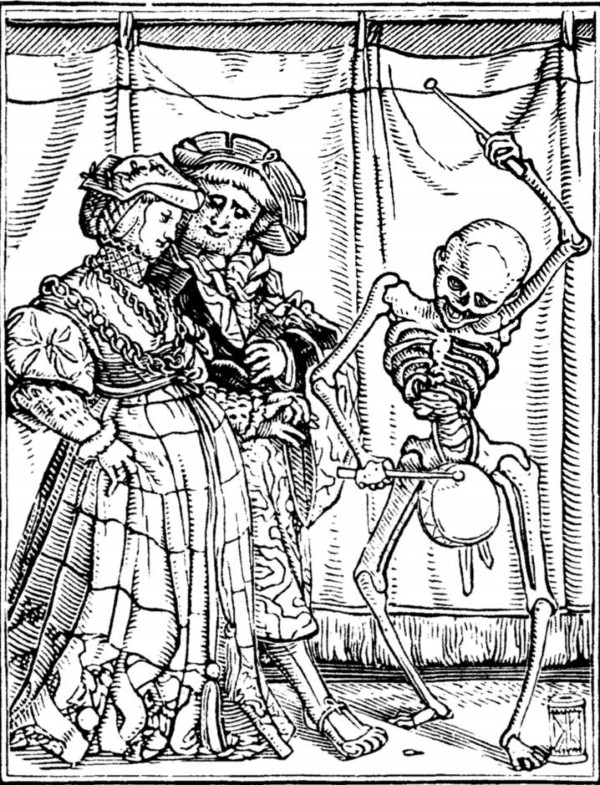
The New York Review of Books has a gallery of woodcuts from Hans Holbein’s The Dance of Death on display in conjunction with the new Penguin Classics edition of the work. The book contains commentary from Ulinka Rublack (whose The Astronomer and the Witch: Johannes Kepler’s Fight for his Mother is also worth checking out) that offers a brief biography of Holbein and helps situate the work in the context of its era. You’ve probably come across a few of these before but it’s much more powerful to see them together as a piece (this is a case where purchasing an ebook version might be the better choice, simply to be able to enlarge the details) with a compelling guide that lets you know what you’re seeing and what you should be looking for. Anyway, this all feels timely, for some reason. The gallery is here:
A Grim Primer On Slenderman
A new documentary on the creepypasta phenomenon is available on HBOGO

In May of 2014, in Waukesha, Wisconsin, a suburb of Milwaukee, 12-year-olds Morgan Geyser and Anissa Weier woke up after a slumber party, led their friend to a wooded area nearby, and stabbed her 19 times with a kitchen knife, leaving her for dead. When questioned by police, the girls said they’d done it to appease a fictional creepypasta character named Slenderman—a figure who’s at once horror movie-creepy and Iron Giant-level misunderstood, depending on which wormhole of fan art you fall down on Tumblr, deviantart, or YouTube. There are a lot of different descriptions of Slenderman out there, but the main gist of the mythology is that he is a tall (you guessed it), slender man who’s able to follow you wherever you go as soon as you learn he exists. He can teleport, he has no face, and he kind of looks like Meet Joe Black Brad Pitt-meets-the Grim Reaper from The Sims. He’s in a suit, but also he’s quite death-y. The girls claimed the stabbing was a sacrifice that proved their loyalty so they could join Slenderman in his mansion in nearby Nicolet National forest. Their friend, luckily, survived the attack.
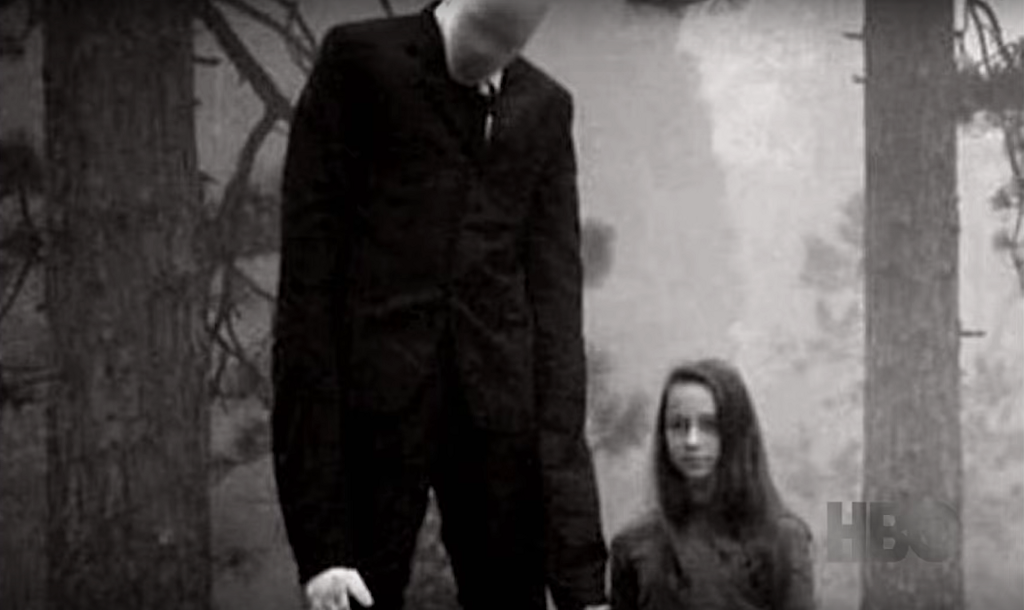
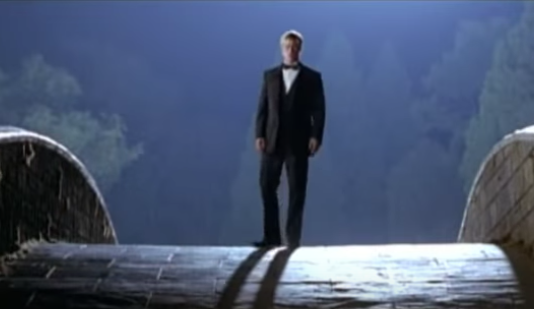

HBO released a documentary about the girls Monday called “Beware the Slenderman,” and in it filmmaker Irene Taylor Brodsky tries to make sense of the case’s bizarre details. The victim and her family (understandably) didn’t agree to take part in the doc, so it largely tracks Geyser and Weier’s fight to be tried as children instead of adults, and features interviews with their family members throughout the process. On my end, I went into this with the same level of understanding that I’d had for the Amanda Knox documentary—I’d seen headlines about the case, but never really clicked through to learn what had happened. “Seems awful,” was my general understanding, and as it turns out, it really was.
About half of the doc is spent setting up the basic facts of the case: Who is Slenderman? Who were these girls? What are their parents like? (A meme, nerdy tweens who had found one another, normal and sensitive-seeming Wisconsinites.) Once that’s out of the way, Brodsky dives into the girls’ psychology and what kind of role that could have played in the crime. Both perpetrators confessed to the stabbing, and they have been diagnosed with schizophrenia and a delusional disorder, respectively, since their arrests. If found guilty, they could face up to 65 years in prison. But—Brodsky seems to want us to ask ourselves—is the justice system really addressing the root problem in this case? Or is giving mentally ill kids unlimited internet access part of what went wrong here?
At the end of the ride, I definitely felt for the families in a way I’m not sure I would if more of the victim’s story had been examined. But at the same time, the movie helps us understand the nuances of a case that might otherwise be easy to write off with, “Lol they’re nuts.”
If you end up having the time, I say watch it, but I’m definitely more interested in what documentaries might come out after the rulings have been reached. Geyser and Weier will have separate trials, and both are set to start later this year.
If Lying Is The New Truth, Is Anal The New Oral?
And other answers to unsolicited lies.
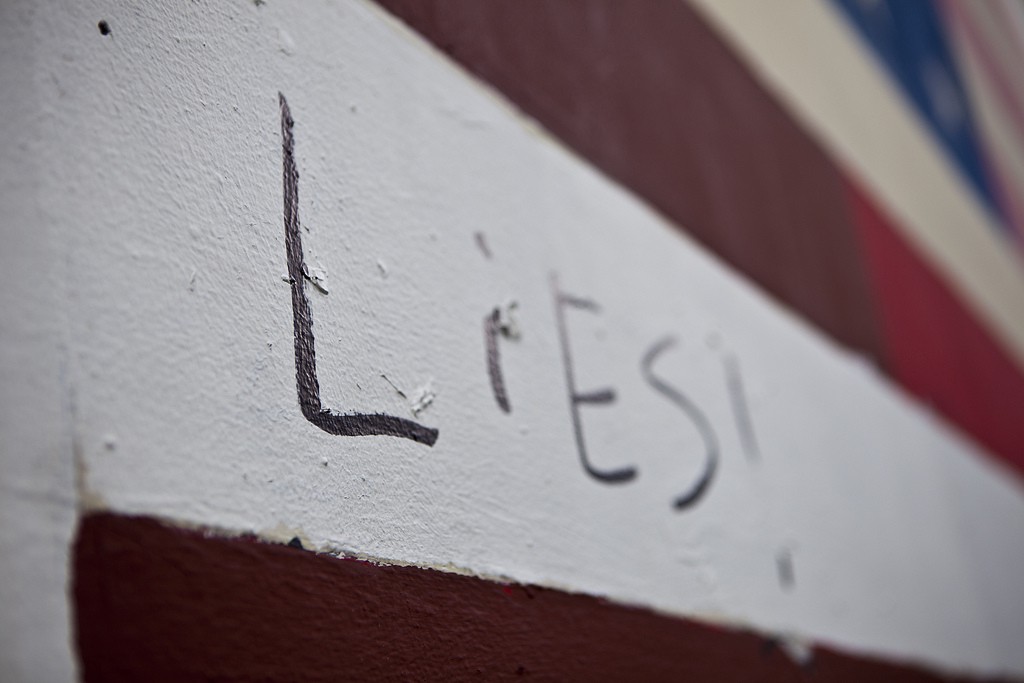
“Is it OK to just outright lie to people’s faces now? What role will the truth have going forward?” — Honest Henry
Fads are often started and ended by presidents. Abraham Lincoln tried to start, and inadvertently ended, the neck beard fad. Most presidents had cool handlebar mustaches from Chester Arthur until Woodrow Wilson. Every man in America used to wear a hat when outdoors at all times until John Kennedy. President Garfield tried to look cool at his Inauguration so he didn’t wear a coat. He died of pneumonia a month later. So the whole coatless fad didn’t catch on, at least among the living.
Lying is the new hot thing coming out of Washington, D.C. And not just the regular kind of lying, like, “We’re not listening to all your phonecalls. But say hi to your mom for us.” Lying about everything in a way where you begin to question whether the fabric of the universe has been torn asunder. Some in the new Administration are excellent liars. Some are clumsy. But they lie with such consistency, they lie with brute force. They lie about things that don’t matter. And they lie sometimes just to make you feel insane. They lie because they simply do not know how to tell the truth.
President Trump is a pretty good liar. He has a job that requires you to lie pretty much all the time. And he’s got this good denial voice. Trump beat Clinton on trust and honesty, so people think he lies slightly less than she does, I guess. Possibly this is just a man vs. woman thing. Men get away with murder. Women get blamed for everything.
Kellyanne Conway could talk the finish off a doorknob. To hear her speak is a pleasant romp through the entire Fallacies List. Even when she comes up with something ridiculous like “alternative facts,” it’s hard to dislike her. She’s doing donuts in the parking lot around stiffs in suits who are trying to dabble in reality, while she is a true artist of the impossible. Give it up, stiffs! She must have run track for Mineola Prep, like Frank O’Hara. I’m not sure why she even keeps getting invited to shows in which her appearances are so reliably reality-free. But I could watch her torment Jake Tapper all day.
Sean Spicer is less gifted at lying. He seems like a rookie. He’ll learn.
Should you adopt the New Not True in your daily life? I am a terrible liar, and I would only recommend people stick to things they’re good at. For me, that’s eating tacos and snoring. And I’m out of tacos. If you’re good at lying, go ahead. But what is really worth lying about? What’s worth having to keep all your bullshit straight? Having to be consistent about it. I can never figure out how people keep so many lies out there, spinning like plates, constantly. It must be exhausting.
The truth is supposed to set us free.
It was the Woody Allen movie “Bullets Over Broadway” that suggested that artists create their own moral universe. I think it was some kind of reaction to the outcry when he married his girlfriend’s daughter. But when you create a moral universe it usually looks like an immoral one to practically everyone else.
My best advice? Wait for this lying thing to die down. Trump will most likely be impeached for something by Memorial Day. I love Senate Hearings in the summer. Mike Pence isn’t great, but he’s not Trump. He calls his wife “Mother.” That’s weird, but not “3.5 million illegal immigrants voted for Hillary Clinton” weird. The truth is still definitely the way to go. Don’t go changing to win anyone’s approval. You’re a genius just the way you are. Yes, you are. A genius.
Plus, you fib every once in a while, too. When that neo-nazi got punched in the face the other day you felt delight. And yet you insist to everyone that will hear you that violence is not the answer. But it is an answer to something. Did you ever think you’d be in a hole this deep in which that felt good? It was mesmerizing. I watched it over and over again. I tried to justify it, and I can’t. That’s how far down we’ve been pushed. So don’t start lying on top of it. We don’t need lies. We need candy. Lots and lots of candy.
Jim Behrle lives in Jersey City and works at a bookstore.
TEETH

Past, present, future,
Tomorrow, a dentist is going to pull the remaining two wisdom teeth out of my head. I’m in England, which means I’ll only get novocaine and a smile. I’m not afraid, exactly, but I am humming a little with nerves. While my teeth are generally okay and they look good for a Brit’s, the run-ins I’ve had with dental intervention have changed the way I think. In memory of teeth past and to psych myself up for tomorrow, here is their story.
I.
The first tooth was the worst. I was nine and it was 1996. On Christmas morning the previous year, I had bitten down and felt a fang of pain move from a tooth up towards my eyeball. I ignored the pain for a long time and often forgot about the tooth. Some months later, I began to feel a bump swelling the outside of my upper gum, on the left side. I would idly poke it with one of my fingers while reading. The gum hurt vaguely to touch, a deep ache rather than tenderness exactly. It was an abscess and the dentist said that she had to take the tooth out.
The first time with the first tooth did not work. The dentist was a little weak, I think, or she couldn’t bear it. She kept pulling, but the tooth did not come out. So, I went to the hospital. At the hospital I received injections for the pain, but they didn’t take well. In retrospect, my generalized hysteria must have made my claims of pain seem less legitimate. Anyway I felt it all.
The white plastic fingers going in and out of my mouth were enormous, hundreds of times the size of my own hands. The fingers were daubed in blood. People held me by the shoulders and forehead (gently, firmly, by the palm) and eventually the tooth left me.
A few years ago, I asked my mother why I didn’t remember the abscess breaking, how strange that I did not notice it. She looked at me very steadily and hard, and I didn’t press the issue.

II.
Tooth Two happened in my second year in New York. This one didn’t have to come out, exactly, but it taught me a strange lesson. I had been experiencing some mild toothache and gone to the university dental center. This is the place where they teach people how to become dentists. I was living in student accommodation on 14th street, so I walked the ten blocks up to the hospital. I had some X-rays taken. The radiographer pointed and said, “Look, you were born without your lower right wisdom tooth.”
I went upstairs to meet my student dentist in his little cubicle in a room filled with a hundred other student dentists. The sound rising from that room could have been coming from a nest of wasps celebrating some kind of colonial victory. The student dentist said I needed a filling, so he gave me a filling. It took forever, he was nervous. His supervisor came and looked over his shoulder and told him off for doing a bad job. It hurt and continued to hurt. I went back a few days later, saying that it still hurt but he said it was fine.
About ten days afterward, I was pacing around my room and groaning. The pain was a completely new experience. I had experienced bad feelings before: dislocated elbow, falls down steps, concussions. But this was completely new. The pain wasn’t hot or cold or sharp. It was metallic, and it glowed, but it glowed with a blackness of incredible negative force. Perhaps the right idea is that it was magnetic. A black hole feels right also: immense gravitation force. I envisioned my face as the face of a toothless old woman, collapsed inward. The pain wanted to suck my existence into it. I wanted to cancel the context of the pain, which was being alive.
I found an emergency dentist who would see me. In a stroke of incredible luck, my mother was visiting me from my home country, and could pay for it. He asked me about the pain, then he gave me some novocaine shots. The injections were the opposite of the injections from the first tooth. I cried a little with relief. The dentist was a teacher at the university dental center, and he was very alarmed at what had been done to me. He gave me an opiate prescription and another shot, then he told me he was sorry.
That afternoon, I felt well enough to take a walk on The High Line. The absence of the pain was a miracle. But it came back. I paced. I moaned. The mental adage, I will kill myself if this doesn’t go away started going around my head again. The dentist got me an appointment with a friend of his who was also a teacher at the university dental center, who was also very alarmed.
Compared to any dentistry I’d ever had before, this root canal was radical and bloody. But from the second he gave me the shot, that endodontic specialist with the Polish name was an angel to me. I could have knelt at his feet. His bald head glowed with benevolence and skill. I thanked history for developing dental medicine. I guess the lesson Tooth Two taught me is that pain can be very literally unbearable and also how to feel pure gratitude, which I had never known before.

III.
The third tooth was quick. It was last year, I had no money, no insurance of any kind. A wisdom tooth was growing sideways into my cheek. I got a fever. On the internet, I found a dentist whose office was on the top floor of a building in downtown Brooklyn. The dental nurse who checked me in was the same nurse who assisted the dentist with the extraction. The dentist took a look and said, “The good news is that I can take it out, right now. You need to have it taken out, right now, so I’m only going to charge you one hundred dollars. The bad news is that I can’t sedate you.”
The nurse gave me a sympathetic look and put her hand on my shoulder. I don’t know why they were so sorry. You are angels, I thought to myself. As U2’s “With or Without You” played in the background and the buses squawked in the street below, the dentist reached in and pulled.

IV.
Tomorrow, I’m getting my two remaining wisdom teeth taken out. This dentist doesn’t do sedation either, but I’m not too worried. I’ll get some novocaine shots and then they’ll cut into my gum and yank. I have a bit of a cold, so I can picture myself asphyxiating on a combination of blood and mucus. But it will be done.

V.
But will it be done? I expect that after these three wisdom teeth (I was born magically without the fourth, as you now know) future dental disasters await. Every time I get sick and then get well again, I think well, that’s it. As if getting a root canal or the flu were like getting the mumps (which I have also had), and that I will develop antibodies after going through one grotesque bout of suffering so that it’ll never happen again.
But really the body just goes round and around. It can’t be completely fixed, only patched up and taken out of pain. But whenever things get really bad I think about pacing round my bedroom like a goaded bull, visualizing my head turning inside out. That first shot, that baldheaded dentist, the gratitude. Tomorrow I’ll be two teeth lighter, and thankful all over again.
Josephine Livingstone is a writer in New York.
Caravaggio's Boy
Who was Francesco Buoneri, and why did his face show up in so many of the famous painter’s canvases?

When Michelangelo Merisi da Caravaggio burst onto the artistic scene in 1590s Rome, it was like the invention of punk rock. From the start, his paintings carried the shock of the new. They combined realism and theatricality in a way that had never been attempted before. Caravaggio set his canvases in intimate, everyday spaces cast in shadow, and lit them with an intense, slanting light. They were stocked with figures easily recognized from the streets of Rome. Soon, dozens of artists were imitating his characteristic style. In time, they became known as the Caravaggisti, the followers of Caravaggio. A few, like Artemisia Gentileschi and Georges de La Tour, stand out for their excellence. Most have become footnotes in the annals of art history, gallery-filler to pass the time between Mannerism and the high points of the Baroque.
For centuries, Francesco Buoneri was a part of this mostly anonymous crowd. Although he seemed to be one of Caravaggio’s most talented followers, one could look in vain for any mention of him in biographical dictionaries. Some later scholars thought he might be French; others, that he was Lombard. Only a single painting, The Resurrection, now in the collection of the Art Institute of Chicago, bore his signature. Nothing more was known about him until the 1990s, when an Italian art historian named Gianni Papi connected Buoneri to another little-known Caravaggisto named Cecco del Caravaggio, and revealed the full importance of this shadowy figure on Caravaggio’s life and art. One key piece of evidence came from a parish census from 1605: Caravaggio was living with a young man named Francesco, listed in the register as his garzone, or boy (in the sense of pool- or errand-; Caravaggio had no children). Another detail came from a centuries-old piece of gossip.
In 1649, forty years after Caravaggio’s death, an English gentleman traveler named Richard Symonds came to Rome. He was an art-lover, and made a tour of all the papal cities’ major collections, taking careful notes of the paintings he saw. At the Palazzo Giustinian in Romei, he was shown the Amor Vincit Omnia, or Love Conquers All, from 1602. It shows a young boy, quite nude, dressed in eagle’s wings, perched on top of a small table, holding a bundle of arrows in his right hand. Someone in the Giustiniani family told Symonds an old legend about the work, which he scribbled down in his notebook. The model posing as cupid was one “Checco di Caravaggio.” As Symonds was told, Caravaggio painted him many times. Not only that, but Cecco was “his owne boy or servant that laid with him.” Cecco is a nickname, short for Francesco. In the census entry from 1605, Francesco appears to have been Caravaggio’s servant or apprentice. Apparently, he was also his lover. In time, Cecco became a painter in his own right. So close was their relationship with Caravaggio that he came to be known by the possessive: Cecco del Caravaggio.
The face of the boy from Amor Vincit crops up in a number of the master’s later paintings, as do those of several of his known assistants, as well as a few well-known Roman courtesans, all of which added to the notoriety of his work. Caravaggio didn’t just paint saints and holy virgins with torn clothes and dirty feet. He gave them the faces of prostitutes and beggars, easily recognized his patrons and rivals. In 1601, Buoneri is an angel, floating above Saul at the moment of his conversion. In 1602, he is John the Baptist. Triumphantly nude, he reclines on a lambskin while grasping a ram by the horns, in a pose better suited to a pagan bacchanal than a pre-Christian hermit. In 1603, he was Isaac about to have his throat cut by Abraham. In that same painting, X-rays have revealed that he was also the angel staying Abraham’s hand, before Caravaggio changed his hair and profile to hide the duplication.
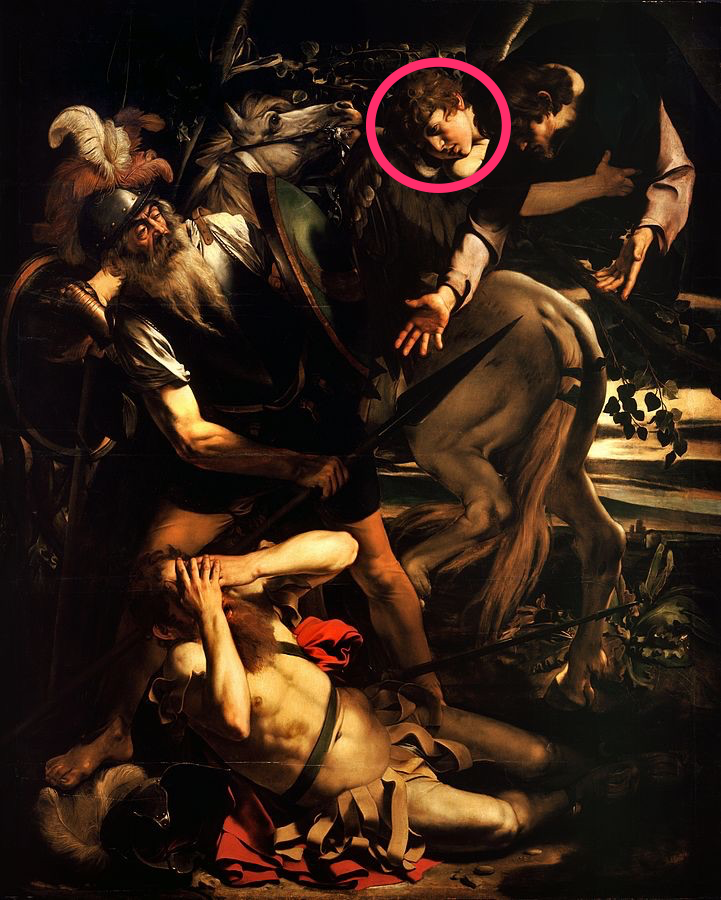

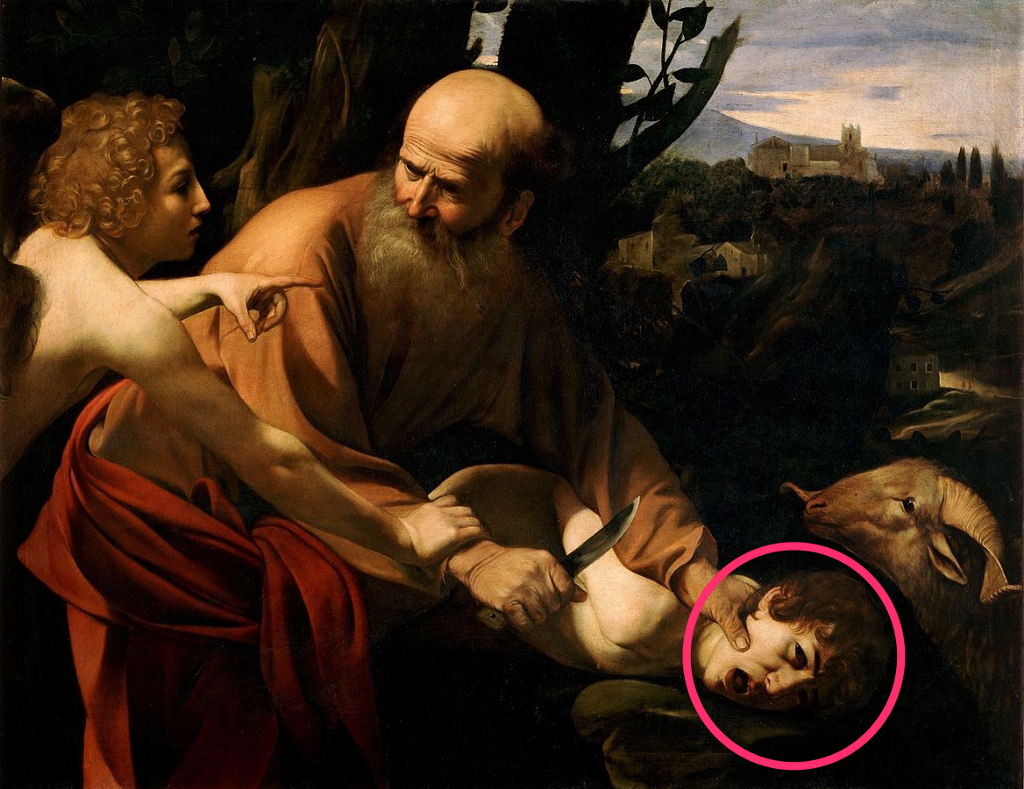
Caravaggio’s most dramatic portrayal of Buoneri comes a few years later, in 1606, when he painted him as David holding the head of Goliath. At the time, Caravaggio was living in Naples, on the run from the law. The year before, he had killed a man named Ranuccio Tomassoni in a duel over a game of tennis, or a brawl about a debt, depending on if you listen to his enemies of his friends. Caravaggio offered the David to Cardinal Borghese, probably in an effort to secure a pardon so he could return to Rome. The painting is at once a remembrance, and a plea for mercy: David holds the severed head of Goliath aloft in his hand, and Caravaggio’s own face is on the giant’s head.
It’s not certain whether Buoneri accompanied Caravaggio on his flight south (Papi thinks he might have, but there’s no proof). But Caravaggio only had a few tumultuous years left: From Naples he moved to Malta, where he worked for the Knights of Saint John, painting portraits and altarpieces, before a mysterious falling-out forced him to flee to Sicily. From Sicily he went back to Naples, where he was attacked by unknown assailants. In 1610, some rumor of pardon, perhaps from Scipione Borghese, prompted him to return to Rome. On the way, he died of fever, supposedly (the reports come from rumors relayed by private newsletters) while staggering along a Tuscan beach in pursuit of the boat that was supposed to take him home.
Buoneri became a painter of note, if not renown. Little of his biography from these years has been reconstructed with certainty — if not for his surviving paintings, he would be a ghost. The Resurrection, which was originally painted for Piero Giucciardini, the Tuscan ambassador to the Papal Court, remains his greatest work. It. Giucciardini rejected it — why is unclear — and it ended up in the Scipione Borghese’s collection. The moment it portrays comes from the moment in the Gospel of Matthew, when a powerful tremor announced the return of Christ. The relevant passage reads: “There was a violent earthquake, for an angel of the Lord came down from heaven, and, going to the tomb, rolled back the stone and sat on it. His appearance was like lightning and his clothes were white as snow. The guards were so afraid of him that they shook and became like dead men.”
The Resurrection is an odd composition, as interesting for what it conceals as for what it reveals. Bunoneri seems more concerned with muscular legs and coy glances than any action involving the return of Christ from the dead. The action takes place in a darkened interior which seems to represent the tomb. A beam of bright light illuminates the scene from the left. Three of the soldiers are startled; one continues his slumber. The viewer pays more attention to cloth and color — the white of the angel’s wings, the bright turquoise of a soldier’s tights. And the thing that most attracts the eye is the face of the angel at the painting’s center. His expression is difficult to discern. Is it knowing, complicit, sly, winking? It seems full of hidden knowledge, as if a secret were being passed between figure and viewer. In Caravaggio’s paintings, Francesco appeared as a victim and a conqueror, but most often as an angel — a messenger. Is this the secret the angel’s glance conveys, the awareness gained from a life as a model and a painter? Or is it something else?
Many of the art historians involved in Caravaggio’s twentieth-century revival have been at pains to deny his homosexuality. Buoneri, so long hidden in the shadows, hasn’t garnered the same attention. The precise nature of the relationship between them will probably remain shrouded in mystery. For one thing, they left hardly a word of personal testimony. For another, they lived at a time before sexualities had hardened into concrete identities, in a place where male love was both widely practiced and a crime.
The paintings tell their own story though. Just as many of Shakespeare’s sonnets are shadowed by the invisible presence of the ‘fair youth’ to whom they are addressed, Caravaggio’s canvases speak a language of the flesh their original viewers would have understood. A few years ago a German visitor to the Uffizi, confronted with Caravaggio’s Bacchus, itself a youthful self-portrait, collapsed in a fit, overwhelmed by uncontrollable sexual desire.
Buoneri’s Resurrection in Chicago might be too demure to stimulate such transports, but it is all the more interesting for what it conceals. Over the years, it has had many lives. It has been a figure for worship, a rejected commission, an object of delectation, an occasion for connoisseurship. Whatever secrets it has left to tell live in the paint, in the form of coded glances and silent sounds.
Nicole Kidman Has More Oscar Nominations Than Tom Cruise
Just One Quick Nice Fact
Then you can get right back to what you’re doing

I know the past 24 hours have been full of a lot of [clears throat], [pulls collar], and [blinks twice], and I definitely want you to get back to the horror of that in a timely manner, but before you do I thought we’d take a sec to share one little fact about this morning’s 2017 Academy Award Nomination announcements.
I learned about it on Twitter myself:
Nicole Kidman now has more Oscar nominations than Tom Cruise.
Isn’t that nice? A poised and seemingly hardworking actor who spent years toiling beneath her iconic then-husband’s embroilment in a pyramid scheme/religion/abusive science society, who somehow managed to get out of that marriage and build a non-culty life of her own design, who then married a country singer and started doing fun comedy bits on late night television, has finally surpassed her former husband’s achievements in terms of critical recognition today. She is, once and for all, Doing Just Fine Without Him Even Though He Was Quite Famous, Thank You. And it’s true! Here’s Nicole’s list of nominations:

And here’s Tom’s:
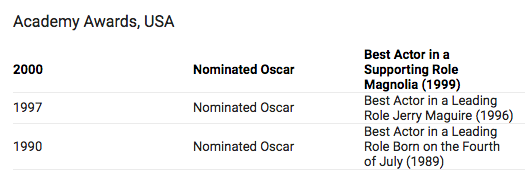
That’s gotta feel……………….real good.
